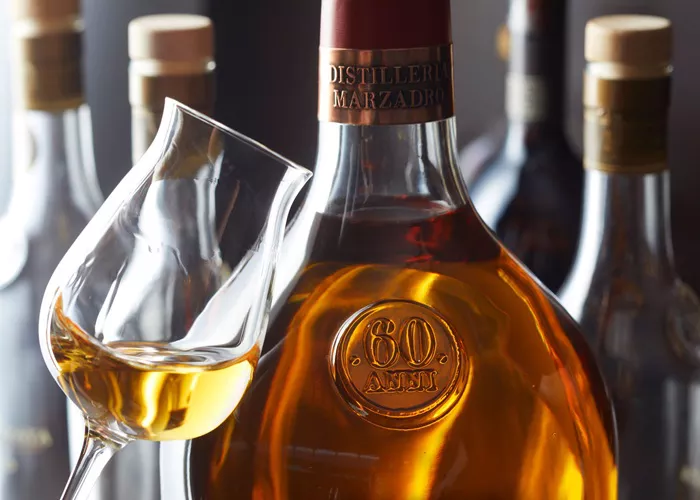Grappa is a type of Italian brandy that is made from the pomace, or leftover solids, of grapes after they have been pressed for winemaking. It is a strong and flavorful spirit that has been enjoyed in Italy for centuries. In this essay, we’ll explore what grappa is made of, including the key ingredients and the process of making grappa.
Introduction to Grappa
Origins of Grappa
Types of Grappa
Key Ingredients in Grappa:
The key ingredient in grappa is grape pomace, which is the leftover solids that remain after grapes have been pressed for winemaking. Grape pomace typically includes the skins, seeds, and stems of the grapes, and it is rich in flavor and aroma. Grappa can be made from the pomace of any type of grape, but it is typically made from the pomace of white grapes, such as Pinot Grigio or Moscato.
Water is another key ingredient in grappa, as it is used to dilute the spirit to its desired alcohol content. The quality of the water used in grappa production is important, as it can affect the flavor and aroma of the final product.
The Process of Making Grappa:
The process of making grappa is a complex and time-consuming one, involving several stages of distillation and aging. Here is a brief overview of the process:
1. Fermentation:
The first step in making grappa is to ferment the grape pomace. The pomace is placed in a large container, and water and yeast are added to start the fermentation process. The mixture is left to ferment for several days, during which time the sugar in the pomace is converted into alcohol.
2. Distillation:
Once the fermentation is complete, the mixture is distilled in a copper still. The still is heated, and the vapors are condensed and collected in a separate container. This process is repeated several times, with the distillate being collected each time. The final distillate is typically a clear, high-proof alcohol that is infused with the flavors and aromas of the grape pomace.
3. Aging:
After the distillation is complete, the grappa is typically aged in oak barrels for several months or years. This allows the spirit to develop a smoother flavor and aroma, as well as a deeper color.
Variations of Grappa:
While traditional grappa is made from grape pomace, there are several variations of grappa that are made from other ingredients. Some examples include:
1. Barrique Grappa:
Barrique grappa is aged in oak barrels that have previously been used to age wine or other spirits. This gives the grappa a richer, more complex flavor and aroma.
2. Aromatic Grappa:
Aromatic grappa is made by adding herbs and spices to the grape pomace during the distillation process. This gives the grappa a unique flavor and aroma that is different from traditional grappa.
3. Single-Varietal Grappa:
Single-varietal grappa is made from the pomace of a single type of grape, such as Chardonnay or Cabernet Sauvignon. This allows the unique flavor and aroma of the grape to come through in the final product.
See Also: What Proof Is Italian Grappa?
The Importance of Tradition and Craftsmanship
1. Handmade vs. Industrial Production
2. The Role of Terroir
Health Benefits of Grappa
1. Digestive Aid
2. Antioxidant Properties
Conclusion:
In conclusion, grappa is a complex and fascinating spirit that is made from the pomace of grapes. Grape pomace and water are the key ingredients in grappa, and the spirit is made through a process of fermentation, distillation, and aging. While traditional grappa is made from grape pomace, there are several variations of grappa that are made from other ingredients. By understanding what goes into grappa, you can better appreciate its unique flavor and aroma, and enjoy it responsibly.
You might be interested
- Is Tequila Blanco the Same Color as Silver?
- What is Blended Whiskey? A Full Exploration
- Is Absolut Vodka Gluten-Free?


